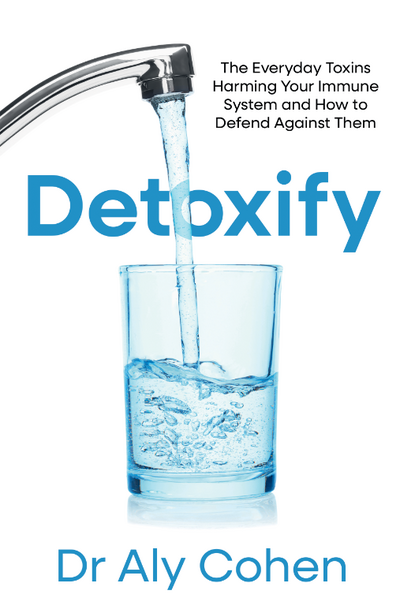
For centuries, women across the globe have been willing to risk their health in pursuit of beauty. In Renaissance Europe and Victorian England, ladies used extracts from deadly nightshade—a toxic plant—to achieve pale skin and dilated pupils, often at the cost of their vision or even their lives. During the 18th century, high-society women wore lead-based foundation, frequently suffering from lead poisoning as a consequence. In the United States, in the 1930s, at least sixteen women were left severely injured or blinded after using Lash Lure, an eyelash dye made from paraphenylenediamine, a toxic substance still found in some hair dyes today.
Such tales may seem alarming, but the trend of using harmful cosmetics continues today. Many personal-care products pose significant health risks, linked to issues ranging from cancer to autoimmune disorders. They can disrupt hormonal and immune functions, heighten the likelihood of allergic reactions, and even increase the risk of premature death. Meanwhile, the clean beauty sector has surged, with retailers like Sephora promoting standards and logos for items with fewer synthetic ingredients. However, without universal regulations in place, “clean” can mean different things to different companies, leaving consumers uncertain about the safety of these products. I’ve gathered valuable insights that can assist you in making informed decisions while still embracing your desired appearance.
Upon examining my beauty routine, I realized that nearly every product I used on my face, hair, skin, and nails contained harmful ingredients that disrupted hormone function and harmed my immune system. Essentially, I was covering myself in a toxic cocktail daily in the name of “beauty” and “hygiene.” When I finally decided to clean up my regimen, I didn’t discard everything immediately; instead, I made gradual, thoughtful changes, starting with the most obvious culprits—my daily shower products. I switched from conventional soap and name-brand shampoo to products that had a score of 1 on the Environmental Working Group’s Skin Deep database (see www.ewg.org/skindeep/). This free online resource evaluates over 96,000 products based on safety, scoring them from 1 (least hazardous) to 10 (most hazardous).
Next, I turned my attention to the moisturizer I applied most liberally to the largest surface of my body: my lotion. This was an essential change for me. While my initial experiences with all-natural moisturizers might not have had the fragrance of my previous products, I felt relieved knowing I was no longer applying chemicals on the largest organ of my body—my skin! Our skin is so efficient at absorbing substances that many medications are delivered topically for maximum efficacy.
However, not every switch was a straightforward success. For instance, when I first experimented with a nontoxic face moisturizer, I experienced breakouts that took days to resolve. This taught me a crucial lesson: just as conventional products can be irritating, not all clean products may suit your skin or hair simultaneously.
Often, what seems like a sacrifice can lead to beneficial outcomes for both health and beauty. When I transitioned to clean shampoo, I initially noticed that my hair appeared greasy, even after washing it the same day. Yet after a few weeks, my scalp adjusted, producing less oil. Now, I don’t need to wash my hair as frequently, and it is healthier, softer, and less damaged as a result. Finding a clean version of mascara I enjoyed took time, and in the interim, I simply cut back on my use of conventional mascara. Reducing exposure can also mean modifying your habits to lessen your toxin contact.

Key Insights for Choosing Clean Personal-Care Products
Less is more
You’re likely using more products than necessary. Cutting down on the number of products is the simplest way to reduce your toxic load. Using fewer chemicals will promote healthier skin, hair, and nails, resulting in a more radiant and nourished appearance.
Embrace trial and error
If the all-natural deodorant or toothpaste you tried years ago didn’t meet your expectations, consider re-evaluating today’s updated formulas, which are often safer and more effective. Clean personal-care options vary significantly, so test out various brands and formulations to find what works best for you.
Perfection isn’t necessary
There’s no rule stating that you have to replace every product immediately. Use as many clean products as you can, but also know that it’s perfectly fine to make informed choices to continue using certain conventional products or services.
Take your time
I didn’t abruptly dispose of my entire collection of toiletries and cosmetics when I decided to focus on cleaner options. I recommend starting with one or two substitutions, and when you run out of a product, switch to a healthier alternative.
Focus on frequently used items
Maximize your efforts by replacing products you use daily and in larger quantities, such as soap, body lotion, shampoo, toothpaste, and sunscreen. For women, it’s particularly important to prioritize nontoxic deodorants and organic tampons or pads, as conventional products may pose increased cancer risks.
DIY Deodorant That Works
- 2½ teaspoons unrefined coconut oil
- 2½ teaspoons unrefined shea butter
- 2 teaspoons baking soda
- ½ cup arrowroot
- 6 drops lavender or orange essential oil
- 6 drops grapefruit essential oil
- 2 drops tea tree oil
Combine the coconut oil and shea butter in a glass bowl or jar, then place this jar in a medium saucepan. Fill the saucepan with enough water to encompass the jar, and bring it to a boil over medium heat. Stir until the coconut oil and shea butter melt, then mix in the baking soda, arrowroot, and essential oils. Pour the mixture into a small glass jar with a lid and allow it to cool at room temperature. Once cooled, cover it with the lid and store until you’re ready to use it. Apply with your fingertips, and keep it in a cool, dry location.






